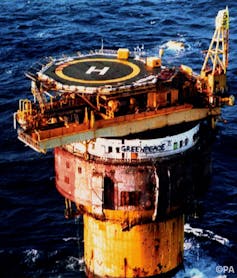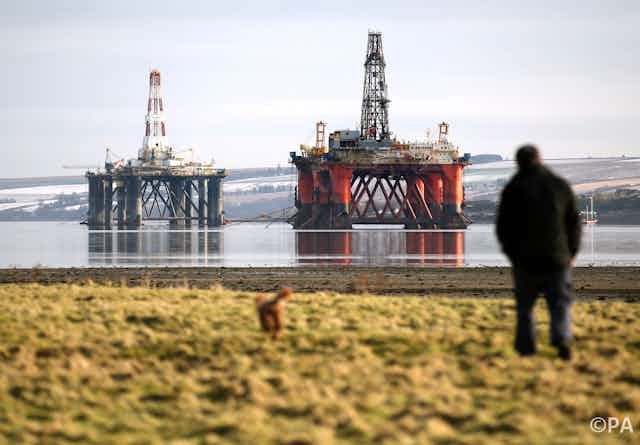More than 40 years since oil first flowed from the Forties oil field, many North Sea fields are coming to the end of their productive lives. This means that platforms must be decommissioned and dismantled, the wells capped. But when a rig is built to withstand all the elements can throw at it, they’re not going to come apart easily.
Oil companies must remove all structures installed at sea, as required by the Petroleum Act 1998 and decision 98/3 of industry body OSPAR, and return the seabed to its original state. This agreement came about partly as a consequence of the controversy over Brent Spar, a floating storage tank belonging to Shell that the regulator had agreed could be sunk at sea. The platform was occupied by Greenpeace in 1995 who questioned Shell’s assessment that it would pose little environmental threat, eventually forcing the company to bring the platform to shore for dismantling.

While the regulations’ aims are laudable, the fact is that many structures dating from the 1970s were designed and built with little concern for their eventual end of life. In the intervening decades the North Sea has changed – it’s not clear what returning the seabed “to its original state” really means now. And, leaving environmental issues to one side, removing thousands of tonnes of steel and concrete in the middle of a heaving North Sea swell is a considerable challenge in itself. The water is not particularly deep – most North Sea rigs stand in water depths of 200m or less – but they were designed to be tough.
Above the surface
The process of removing the superstructure involves various approaches. One is to break the structure into smaller pieces for removal by the platform’s own crane onto waiting ships, a technique known as “piece small”.
Alternatively the platform’s separate modules such as for drilling, storage or crew compartments are removed whole – effectively deconstructing the platform in the reverse order of that by which it was built. This requires a heavy floating crane ship and transportation barges. Usually the original lifting points used when the modules were fitted have corroded in the years since, or alterations to how the module was used have led to changes in their weight and balance – and this adds to the difficulty of attempting a heavy lift approach.
The third alternative is to raise and move the platform intact, known as “single lift”. Until recently this was only an option for small platforms such as Shell’s Indefatigable installation. However lifting contractor Allseas recently commissioned the largest lift vessel ever built, the twin-hulled, 382-metre-long and 124-metre-wide Pioneering Spirit. Shell will use this huge ship to lift the 24,200-tonne superstructure of the Brent field’s Bravo and Delta platforms in single lifts for recovery to shore.
There are additional challenges to think about: how to remove oil and gas residues so as not to pollute the seas, how to maintain power and stability, and in the case of the piece small approach – once the platform’s crane has removed most of the superstructure, what will remove the crane itself?
Below the waterline
Removal of the support sections under the sea, often built in the form of a steel jacket made of steel pipes welded together, presents another set of technical difficulties. For example, Canadian Natural Resource’s Murchison installation at 27,600 tonnes is the largest “jacket” yet to be decommissioned – it has steel thicker than 80mm in some sections supporting the topside of 24,500 tonnes. Dating before the 1998 regulations, most of these steel jackets were not designed for removal. While Allseas’ Pioneering Spirit crane ship can lift platforms up to 25,000 tonnes – the weight of more than four Eiffel Towers – few were designed to be lifted out in one piece.
During the decommissioning of the North West Hutton platform’s jacket, BP’s decommissioning team undertook 22 heavy lifts for the topside and 224 subsea cuts using a combination of diamond wire, abrasive water jetting and hydraulic cutting shears to remove 58 jacket sections. The lower parts of the legs were piled into the seabed and could not be removed, resulting in a potential shipping hazard and an exclusion zone. This has pros and cons, however: while trawlers cannot fish in these areas, there’s evidence to suggest that they benefit fish stocks.
Some platforms, like those in Shell’s Brent field, even include concrete structures. At around 250,000 tonnes, there’s simply no way to remove these – they have in effect become the “new normal” for the seabed where they lie. Making these structures safe for shipping and ensuring minimal environmental hazards in the future is the best that can done for now.
There’s no single solution to the challenge of decommissioning an oil rig or platform. But the environmental concerns are very real, and with the cost of decommissioning Britain’s platforms estimated at £40 billion – a substantial portion of which will be borne by the UK taxpayer – it’s clear the industry, environmentalists and regulators need to work together to come up with new and better solutions.

